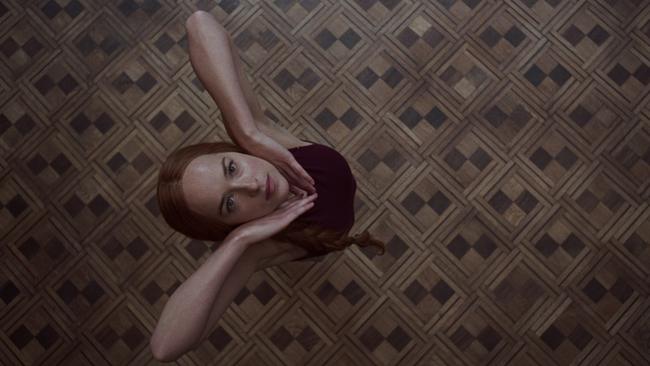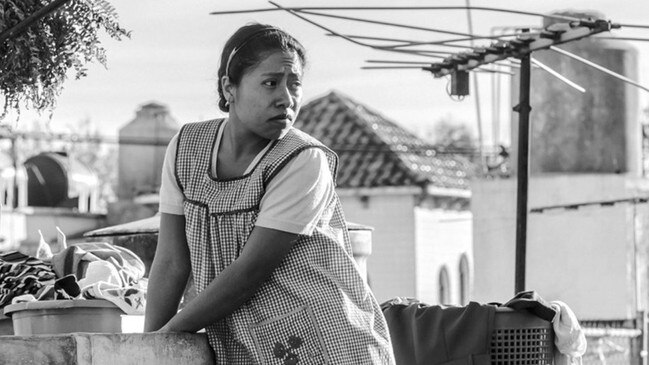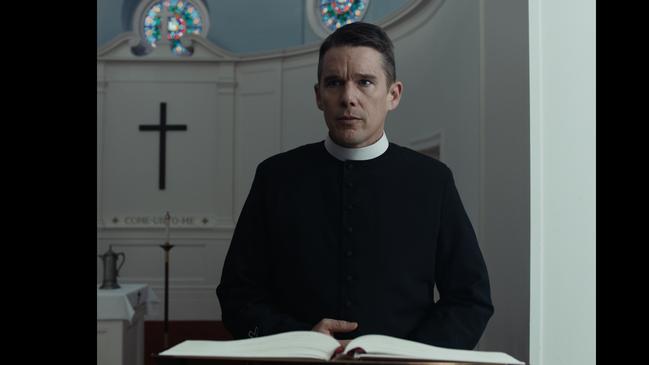Dancing in the dark
Excitement was at fever pitch as Luca Gaudagnino’s remake of Suspiria premiered in Venice,but did it live up to the hype?

The original Suspiria (1977) was the fifth film made by Italian horror master Dario Argento. It was a garish affair, notable for the improbably colourful interiors of the dance academy in Freiburg where a young American student (Jessica Harper) finds herself in danger. With its deafening soundtrack and grisly killings, the film — which screened in a dubbed American version in Australian cinemas — was preposterous yet unnerving.
It came as a surprise, then, when the talented Italian director Luca Gaudagnino (I Am Love, 2009; A Bigger Splash, 2015; Call Me By Your Name, 2017) announced that he was making a new version of Suspiria. And when it was revealed that the film would run for just over 2½ hours, an hour longer than Argento’s version, there was even more speculation.
Then word started to trickle out that Guadagnino’s favourite actress, Tilda Swinton, was playing two roles in the film, not only that of the severe, chain-smoking Madame Blanc, artistic director of the dance school (Joan Bennett in the original), but also that of a new character invented for the remake — but more of that later.
So when the new Suspiria premiered in Venice a couple of months ago, anticipation was at fever pitch — and, inevitably, there was a degree of let-down. Despite that, there is a great deal to enjoy in Guadagnino’s film, more than there ever was in Argento’s.
The film opens in Berlin in 1977, with the city still divided between East and West. A young American dancer, Patricia (Chloe Grace Moretz), arrives at the home of Dr Josef Klemperer (Lutz Ebersdorf) to express her fears about the dance academy where she’s studying. Klemperer doesn’t take her very seriously, but when she disappears — after leaving a notebook with him — he starts an investigation.
Meanwhile, Susie (Dakota Johnson, daughter of Melanie Griffith and Don Johnson) arrives at the academy, which is located immediately opposite the Berlin Wall. Despite the fact that she has had no training, she’s given an audition and residential status.
The alert film buff will quickly appreciate that members of the teaching establishment have been cast with actresses who made their mark in the 70s — Angela Winkler, Ingrid Caven, Renee Soutendijk among them; even the original Susie, Jessica Harper, turns up in a small but essential role.
The film’s first big scene occurs when Susie, who has been giving the lead role in an ambitious ballet titled Volk, is rehearsing while in another room the school’s former lead, Olga (Elena Fokina), literally tears herself apart. This is a gruesome showstopper, but much of the film unfolds in a very low register, especially when Ebersdorf’s Klemperer is on screen. The major differences between the two films are the far greater use of dance sequences in the new version, the introduction of the Klemperer character, and the rejection of the garish primary colours that distinguished Argento’s movie in favour of Cold War-era drabness.
Neither Suspiria is particularly horrific. But what makes the new film compelling viewing is the extraordinary contribution of Swinton, who plays three roles in the movie.
At Venice there was speculation about the unknown actor Lutz Ebersdorf, but word quickly spread that the character of Klemperer was actually played by Swinton under a heap of make-up. She is extraordinary in the role, and the unusual casting actually makes the character more interesting than he might otherwise have been. (As for the third role Swinton plays, I’ll leave it to readers to spot her when they see the movie).
Ultimately, the new Suspiria is a strangely low-key and at times rather turgid affair, but there are enough compensations, not least in the outstanding cinematography and editing, to make it a highly intriguing cinema experience.
-

Mexican director Alfonso Cuaron’s Roma won the Golden Lion in Venice this year, despite the fact its access to viewers will, as far as we know, be largely limited to those who subscribe to Netflix. The film will open the upcoming Latin American Film Festival in Australia and, though we don’t usually review films screened only at these festivals, I’m making an exception in this case because if ever a film deserves to be seen on a big cinema screen, it’s Roma.
This is an autobiographical movie set in a suburb of Mexico City in 1970, when Cuaron was nine. The events that unfold are all seen through the eyes of Cleo (Yalitza Aparicio), an indigenous woman who works as maid, childminder and family friend for a doctor, Antonio (Fernando Grediaga), and his wife, Sofia (Marina de Tavira). The couple have four children, three boys and a girl, but it soon transpires that Antonio is involved in an extramarital affair — he tells the family he’s going to a medical conference in Canada but he never returns, and Cleo spots him on the street in the company of a young woman.
Cleo herself has a boyfriend, the narcissistic Fermin (Jorge Antonio Guerrera), a martial arts exponent — but when she tells him she’s pregnant, he too departs.
The men in this movie are unreliable bastards and Fermin turns out, in addition, to be a right-wing extremist as we discover in a terrifying scene in which anti-government street riots spill over into the department store where Cleo and Sofia’s mother are shopping.
Roma is stunningly photographed, by the director himself, in gorgeous black-and-white and the Scope ratio. Rich in detail and superbly staged, this personal story rings true on every level without the slightest hint of exaggeration.
It’s a must-see, and one can only hope that, for those unable to get to the Latin American festival openings and who don’t subscribe to Netflix that wider cinema exposure, followed by a Blu-ray/DVD release, will eventually occur. This is perhaps the major cinema experience of the year so far.
-

Getting only a very limited release, veteran Paul Schrader’s quietly impressive First Reformed evokes two great films of the past: Robert Bresson’s Diary of a Country Priest (1953) and Ingmar Bergman’s Winter Light (1962). Ethan Hawke portrays Toller, the Protestant minister of a small country church, where he preaches to a pitifully small congregation.
Toller is not only a sick man, he’s also grieving the death of his son in Iraq. His anguish increases after a visit from a pregnant parishioner, Mary (Amanda Seyfried), who begs him to talk to her husband, Michael (Philip Ettinger), an environmental activist who wants his baby aborted to prevent the child coming into a doomed world.
The film is a cry of rage against the polluters and corrupters who, Schrader contends, are destroying the planet, as well as against the commercialisation of the churches and the growth of terrorism.
Hawke gives one of his finest performances as Toller, and the bittersweet conclusion, accompanied by the lovely old hymn Leaning on the Everlasting Arms, is achingly memorable.
Suspiria (MA15+) 3.5 stars
National release
Roma (TBC)4.5 stars
Opens Latin American Film Festival
First Reformed (M) 4 stars
Very limited release


